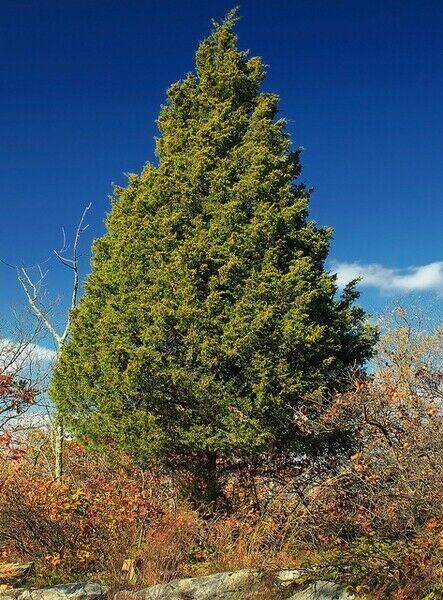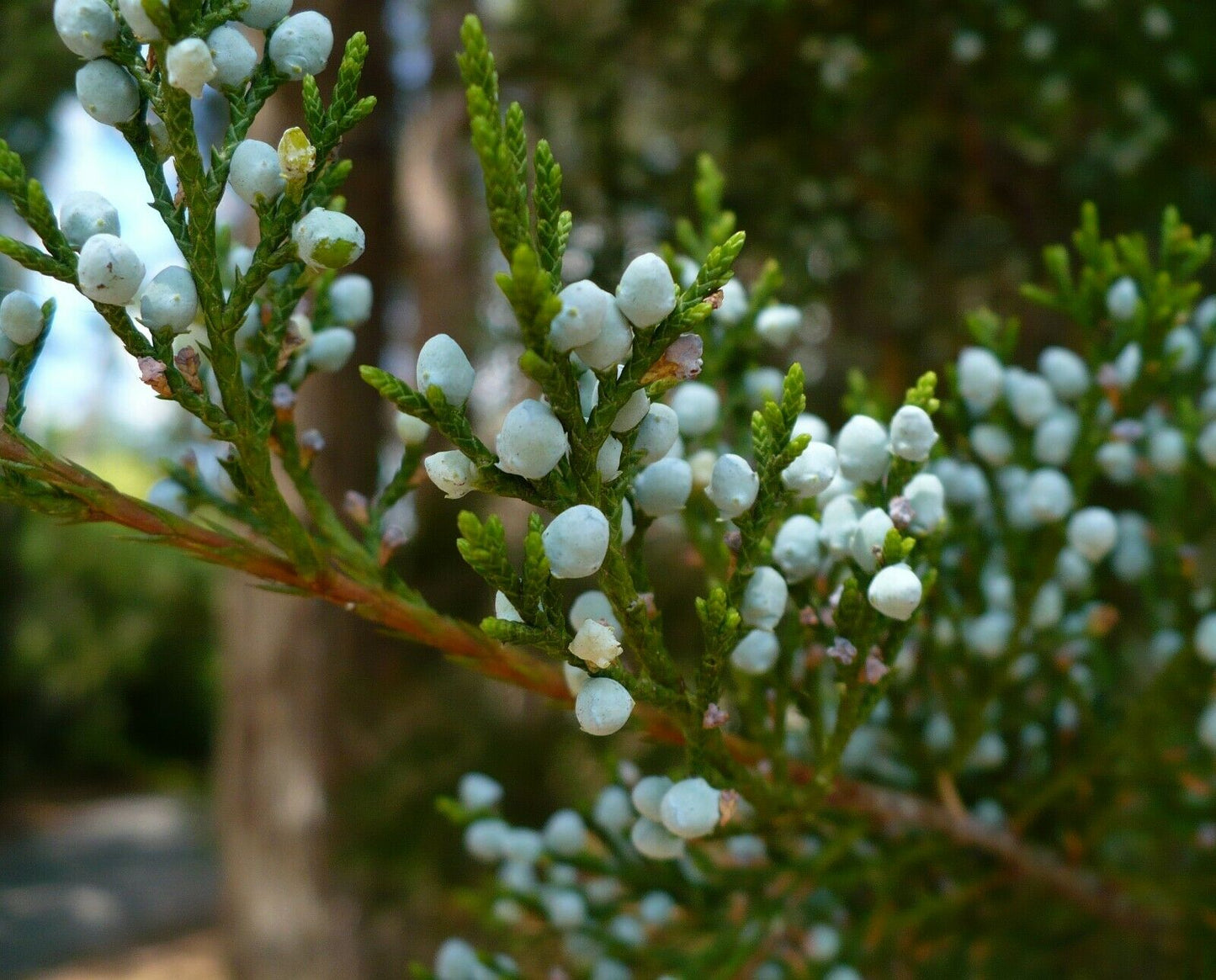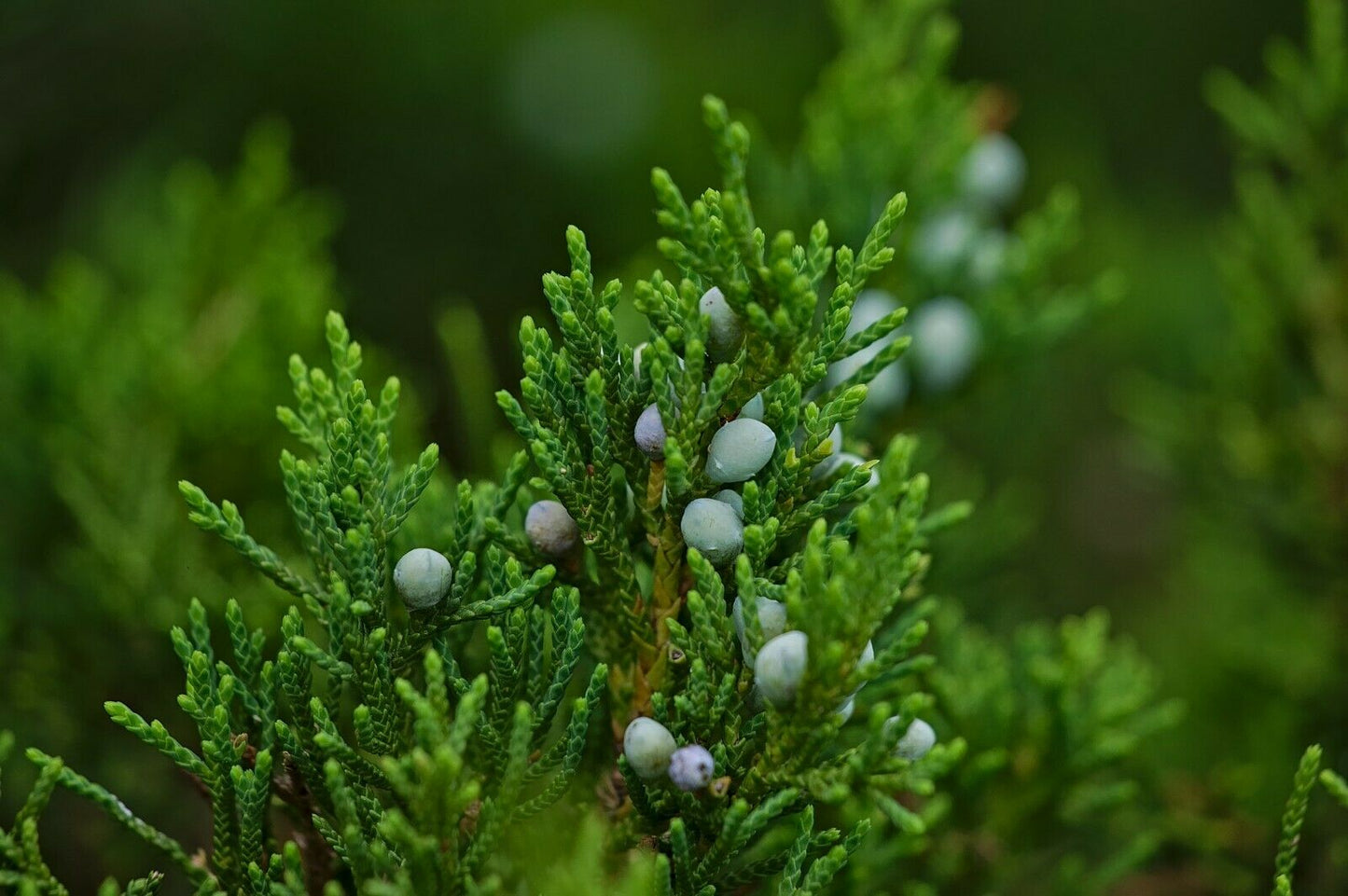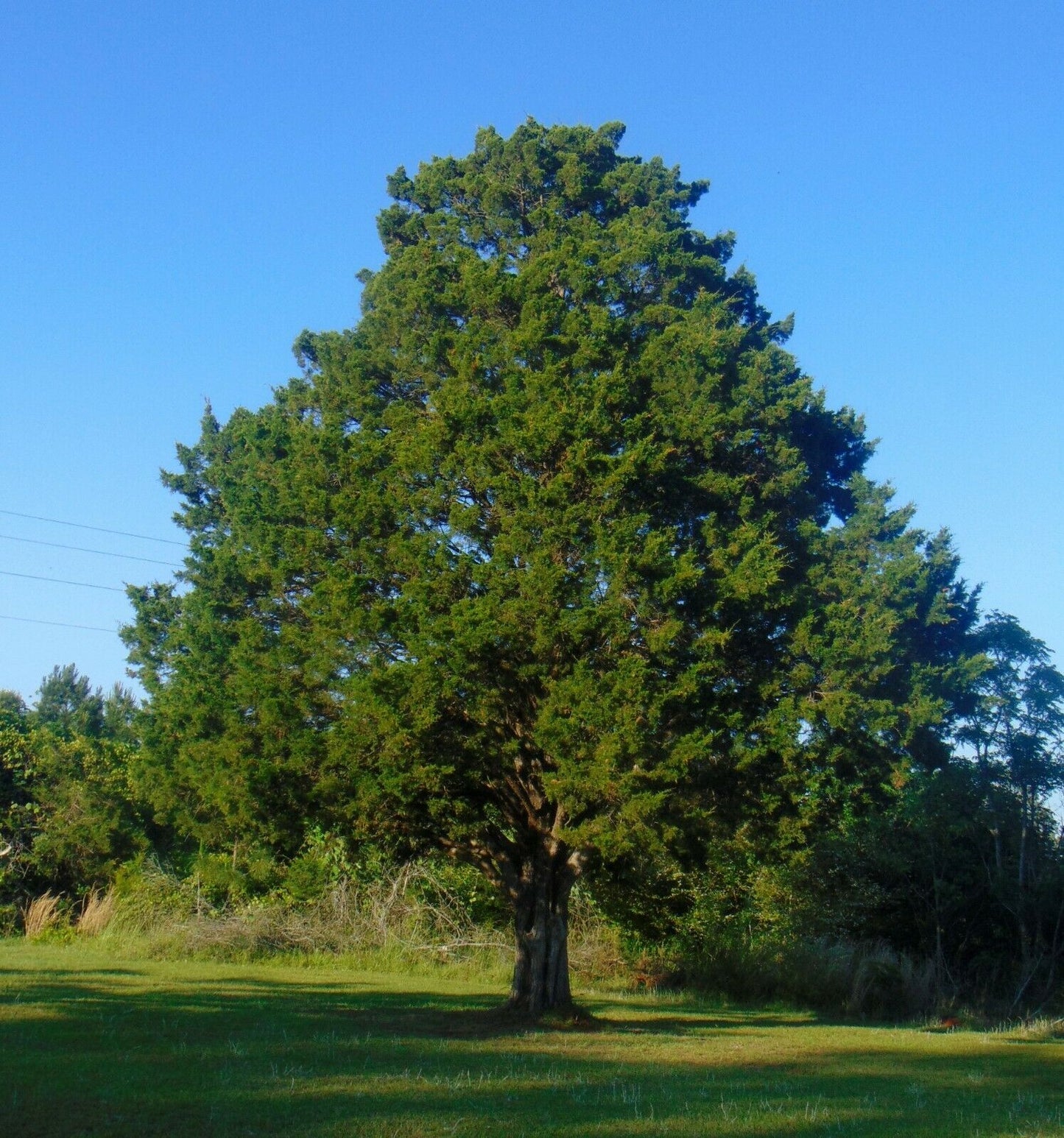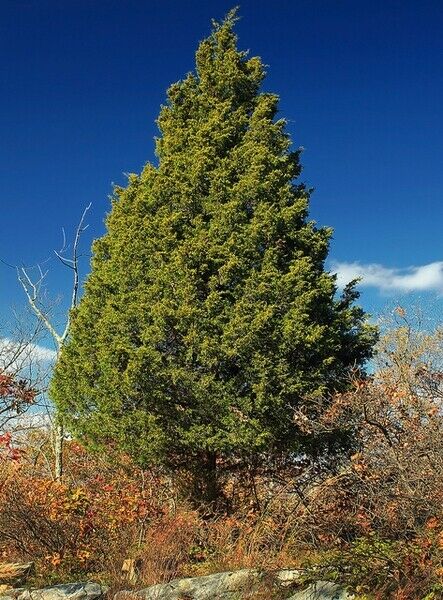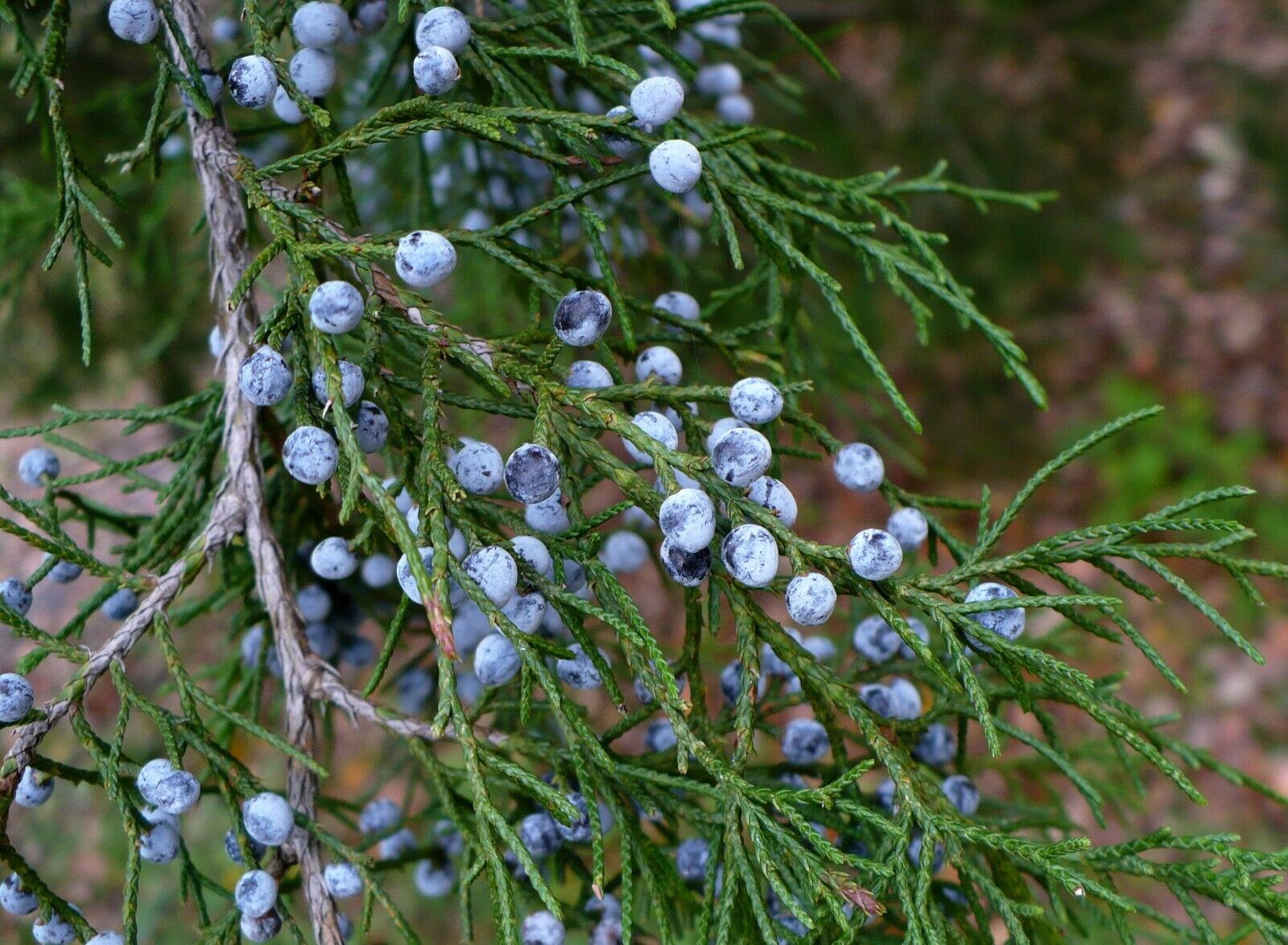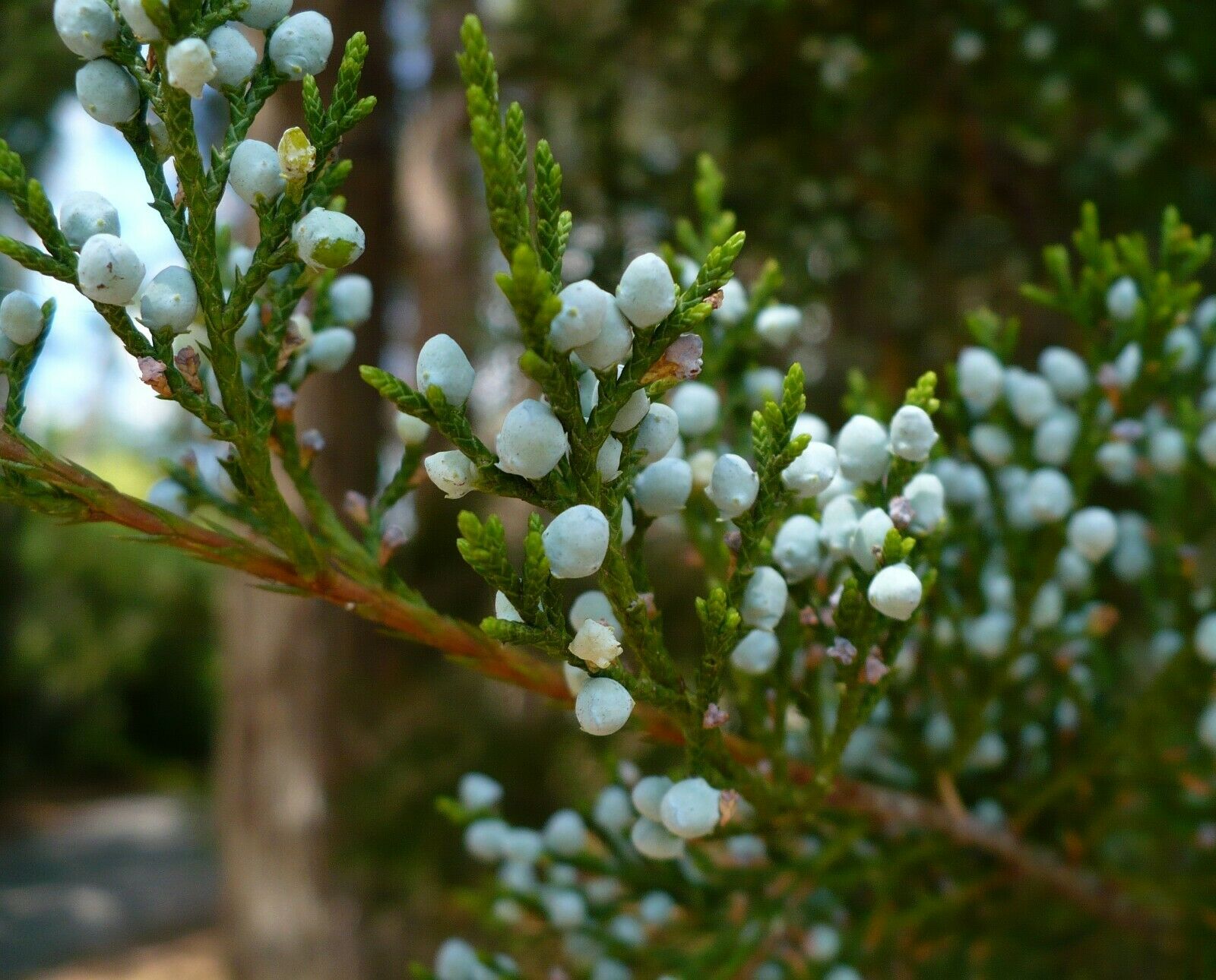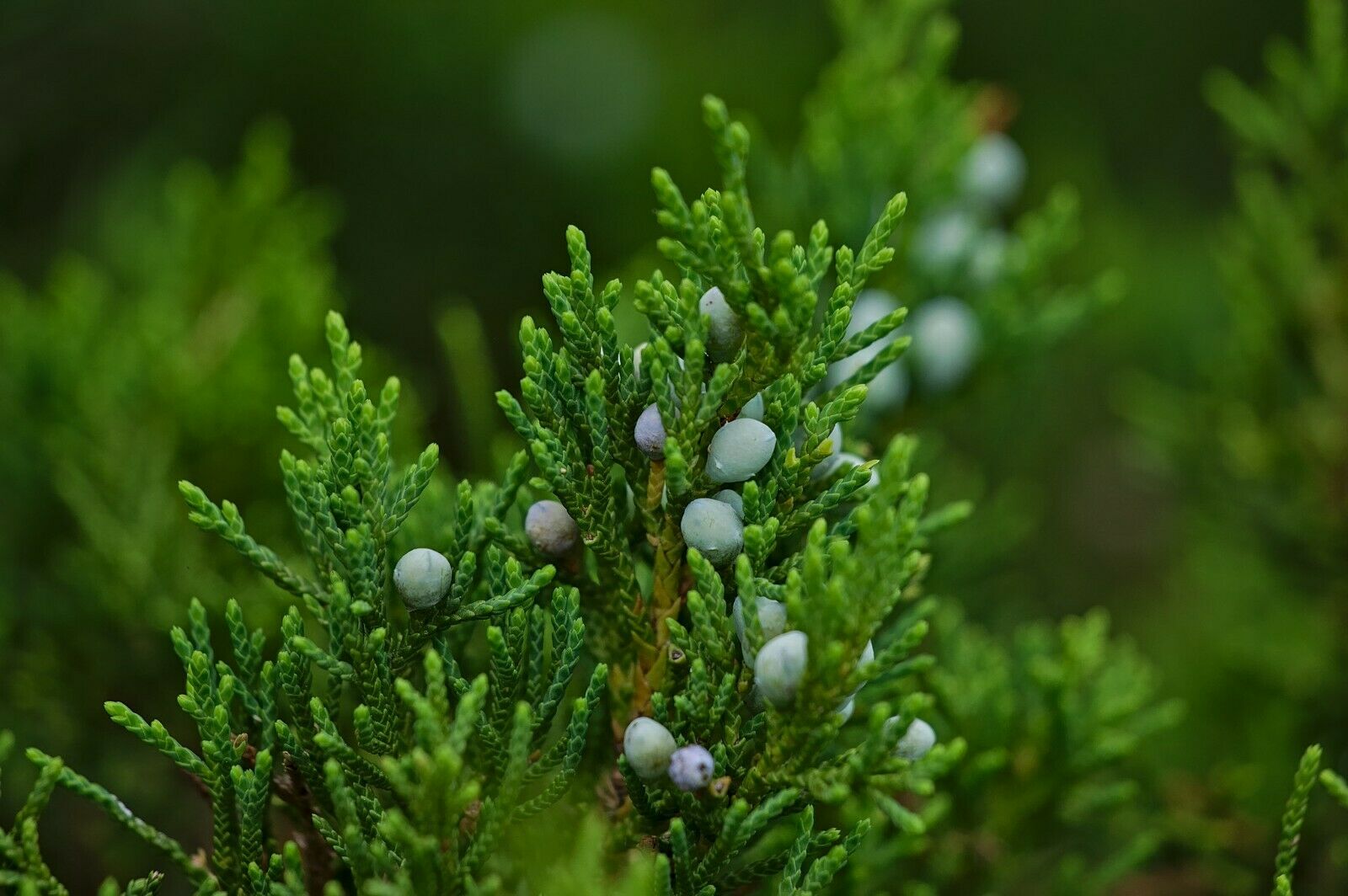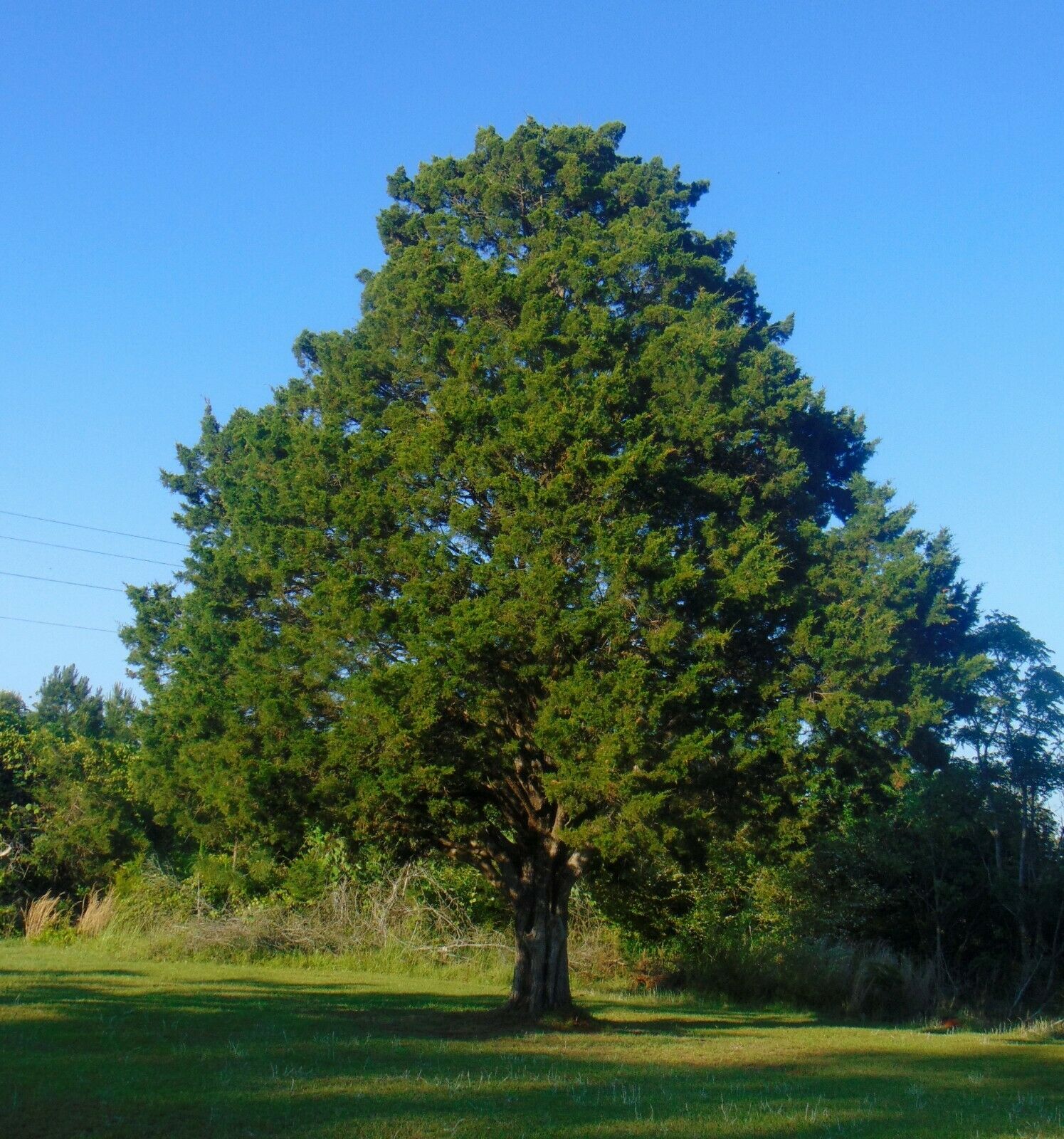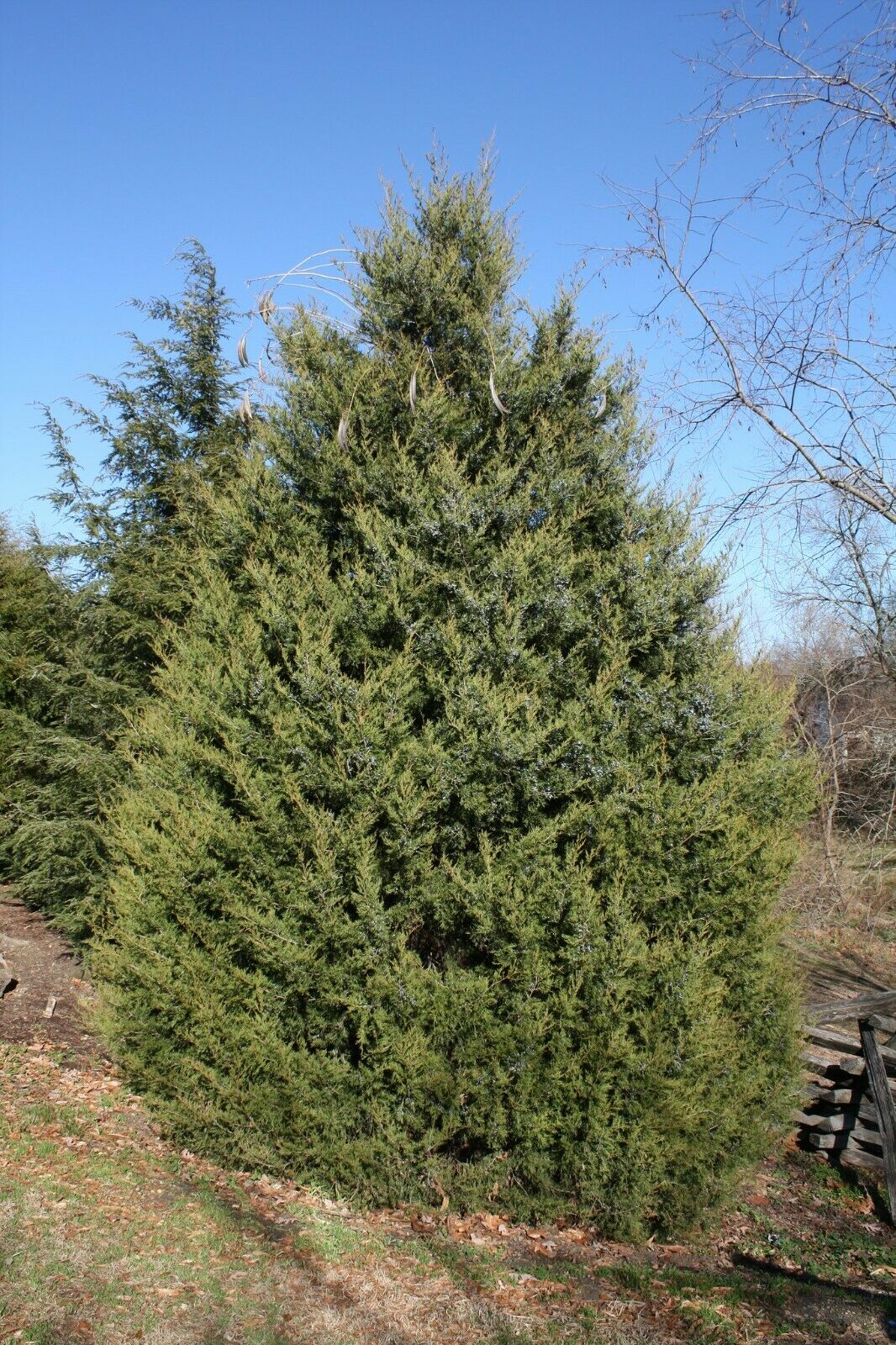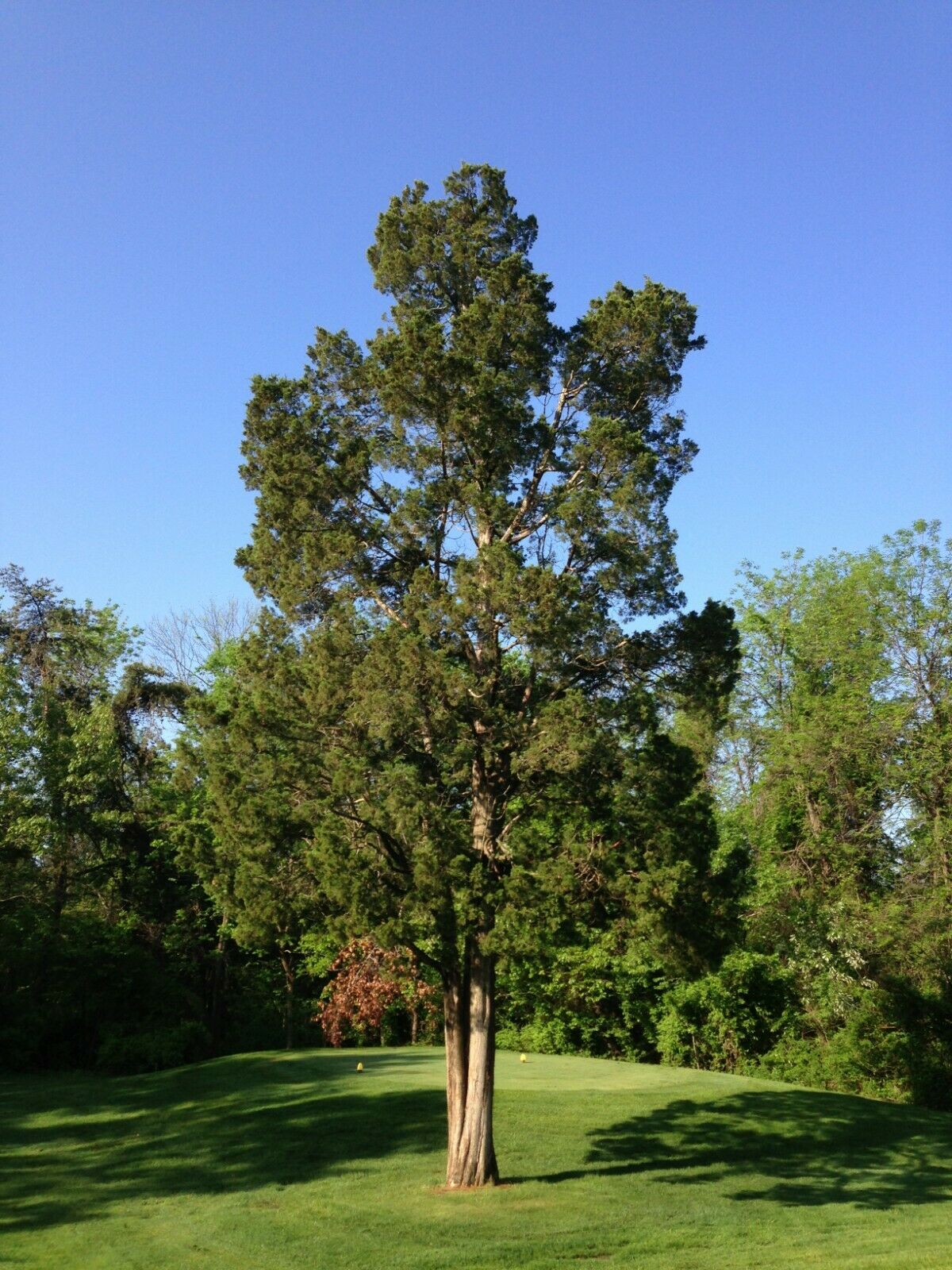Floridaseeds
Eastern Red Cedar Juniper Juniperus virginiana 100 Seeds USA Company
Eastern Red Cedar Juniper Juniperus virginiana 100 Seeds USA Company
Couldn't load pickup availability
Juniperus virginiana, commonly known as eastern red cedar, is a species of coniferous tree native to eastern North America. Here's a detailed description:
Appearance:
Eastern red cedar is an evergreen tree that typically grows to a height of 10 to 20 meters (33 to 66 feet), though some specimens can reach up to 30 meters (98 feet).
It has a conical or columnar shape with a dense crown of foliage.
The bark of mature trees is fibrous and reddish-brown, peeling off in strips.
The branches are densely covered with scale-like leaves arranged in overlapping pairs, giving the tree a feathery appearance.
The leaves are typically dark green, but they may turn bronze or purplish in winter.
Cones:
Eastern red cedar produces small, bluish-purple berry-like cones known as juniper berries.
These cones are round and fleshy, resembling small berries, and they are covered with a whitish, waxy coating.
The cones contain seeds that are dispersed by birds, which eat the berries and then spread the seeds through their droppings.
Habitat and Distribution:
Eastern red cedar is a hardy and adaptable tree that can thrive in a variety of habitats, including dry, rocky soils and sandy plains.
It is commonly found in open woodlands, savannas, prairies, and along roadsides.
The species has a wide distribution range, stretching from southeastern Canada through the eastern United States, reaching as far south as Florida and as far west as Texas and Nebraska.
Ecological Importance:
Eastern red cedar provides important habitat and food for wildlife, including birds, small mammals, and insects.
The dense foliage offers shelter and nesting sites for birds, while the berries provide a food source during the winter months.
The tree is also valued for its soil-stabilizing properties and ability to prevent erosion, making it useful for reforestation and land reclamation projects.
Cultural and Practical Uses:
Eastern red cedar wood is highly aromatic and decay-resistant, making it prized for use in woodworking and crafting.
The wood is commonly used to make furniture, fence posts, chests, and cedar closets.
The species has cultural significance for some Indigenous peoples and has been used traditionally for medicinal purposes and in ceremonial practices.
Growing Instructions
The seeds have a period of dormancy. They can be planted outdoors in the fall for spring germination or they can be cold stratified to simulate winter conditions and to break their dormancy.
- Place the seeds in a plastic bag and seal it. Store the bag in a refrigerator for two months.
- Fill a pot with potting soil. Use a pot that has drainage holes in the base.
- Sow the seeds on the soil and cover them with a thin layer of soil.
- Water the container and leave it to drain.
- Put the pot in a warm, sunny area.
- Water the pot regularly so that the soil is moist but not wet.
- The seedlings can be transplanted when they are a few inches tall.
Materials
Materials
Shipping & Returns
Shipping & Returns
Dimensions
Dimensions
Care Instructions
Care Instructions
Share
